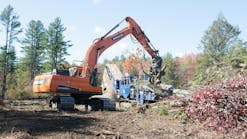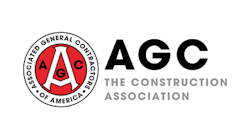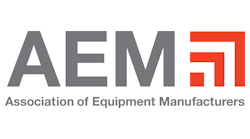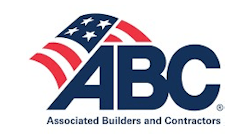History of Landfill Gas
Traditionally, North American landfills were operated as a disposal business financially driven by the tons of waste processed. As environmental regulations and technology developed, landfill operations transitioned across the United States to reduce environmental impact and increase efficiency. Gone are the typical “dump” sites, and in are landfill biogas collection and bioreactors. These sophisticated waste management systems are designed to capture previously emitted biogas and pipe it to a central location. When the primary fear was environmental contamination, odors, and greenhouse gas emissions, flares were installed to combust the collected biogas as a simple alternative. Then, landfill gas-to-electricity incentives were created and gas was commonly sent to combined heat and power (CHP) systems for electricity production and output onto the grid.
While flares and landfill gas-to-electricity remain in use at numerous locations, a more financially-viable option has recently emerged as an alternative landfill investment—landfill gas upgrading to renewable natural gas fuel for high-BTU projects.
Landfill Gas Upgrading
The goal of gas upgrading is to remove as much of the impurities (called “constituents”) as possible from landfill gas and biogas. Since methane is the primary hydrocarbon (fuel) in the gas produced by degradation of organic wastes, gas upgrading removes most non-methane constituents, thus purifying the methane gas stream to natural gas quality—called renewable natural gas (RNG). Typical constituents in these gas streams are carbon dioxide, oxygen, and nitrogen. Landfill gas upgrading consists of isolating the energy content of landfill gas using purification technologies. Landfill gas upgrading technology has existed for decades but often did not have an appealing rate of return due to a low-value product and high costs to interconnect with the natural gas pipeline for RNG injection or alternative fuel end use.
However, recent legislation, tax credits, and energy demands all play a critical role in the growth of landfill RNG projects and have prompted a new market of renewable fuels. Key incentives include:
- New legislation and environmental goals—such as California’s AB 32—requiring mandatory landfill gas collection and destruction
- Renewable energy credits tied to renewable fuels—such as RNG from landfill gas—have a value up to 10 times greater than the value of the landfill gas itself.
- High dollar value for RINs (“Renewable Identification Number” assigned to a batch of biofuel to track its production) generated from upgraded landfill gas to RNG transportation fuel
- Increased Environmental Protection Agency (EPA) requirements to purchase RNG RINs
In summary, a limited supply of RNG produced plus heightened RNG demand from EPA plus high RIN dollar value equals high-value RNG product from landfill gas.
Cumulatively, these factors make a highly lucrative and viable option for upgrading biogas or landfill gas to RNG, despite inexpensive natural gas prices.
Getting into the Pipeline
It is a common misconception that biogas/landfill gas can be directly injected into the pipeline since it contains methane. However, utility pipeline control maintains a strict minimum standard (“pipeline specification”) on gas in the pipeline, thus requiring biogas upgrading prior to injecting it into the pipeline. Each biogas source (i.e. landfill, anaerobic digestion, wastewater treatment, etc.) and each pipeline has different characteristics so the treatment or upgrading process changes slightly between applications. But, for the most part, much of the treatment process is the same across applications.
Landfills capture gas by pulling a vacuum on the landfill, which causes air to be pulled in through the landfill surface and dilute the energy content of the raw landfill gas. This process incorporates air into the system, in turn allowing air to make it to the biogas collection point and elevating the percentage of nitrogen and oxygen.
The table above outlines typical constituents of landfill gas with an average pipeline specification to show what levels are present in raw gas versus the upgraded product.
As shown in the table above, pipeline specification can be quite stringent for various constituent levels. These required pipeline standards can make verifying a supply of continuous gas stream quite challenging. Often, pipelines require a metering station with continuous gas analyzers managed by the utility to verify the quality of RNG at the injection site, and gas upgrading technology providers also must have continuous gas analyzers at the end of their treatment process to verify system performance. This double gate quality control ensures standards are met prior to grid entry, but can also lead to measurement differences and potential for delivery complications.
Upgrading Technology
There are multiple gas upgrading technologies that upgrade raw biogas/landfill gas and remove constituents to meet pipeline specifications. For landfill gas streams, carbon dioxide makes up the bulk of non-methane molecules. Commonly used technologies to remove carbon dioxide include water wash systems, amine scrubbers, membranes, and pressure swing adsorption (PSA) vessels. Each of these technologies cannot typically upgrade biogas and landfill gas completely without additional stages or add-ons.
Nitrogen removal, however, is the true challenge of landfill gas cleanup. Most gas upgrading technologies can generally meet pipeline specifications when nitrogen levels are below 3.5%, but landfills often experience 7–15% nitrogen in the raw gas stream. Nitrogen can only truly be rejected using a PSA system. Without PSA technology, it is difficult to separate this nitrogen from methane while meeting the pipeline specifications and maintaining guaranteed methane recovery due to the characteristics of the nitrogen molecule.
Landfill upgrading systems are therefore typically a combination of a membrane system and PSA system, or two stages of PSA, where the first stage is focused on carbon dioxide removal and the second on nitrogen rejection.
Landfill Gas Upgrading Case Studies
Deployment of two-stage PSA systems is technically and financially viable in today’s current market. Since the United States is lingering in developing these types of renewable energy facilities compared to Europe, very few have been installed to date. BIOFerm Energy System’s current two-stage Carbotech PSA landfill upgrading project will be one of the first of its kind; a high-nitrogen facility in the US. This technology is backed by years of PSA experience and landfill demonstration at locations throughout Europe and worldwide. European pipeline standards vary slightly; however, Carbotech PSA landfill systems have been in operation for over 30 years in a competitive market.
Landfills in the US have the opportunity to efficiently utilize energy that was previously wasted, and provide cleaner, more renewable infrastructure.
Looking to the FutureAs society drives towards a “greener” future, the demand for upgraded biogas is expected to increase. With the increase in demand comes the challenge of pipeline access. Luckily, the low cost of natural gas has caused a rapid growth in the natural gas pipeline structure. This places pipelines in previously untapped territories, and closer to remote areas where biogas and landfill upgrading technology may be deployed. This will translate into easier access to the grid and a potential change in fuel use across the country.












